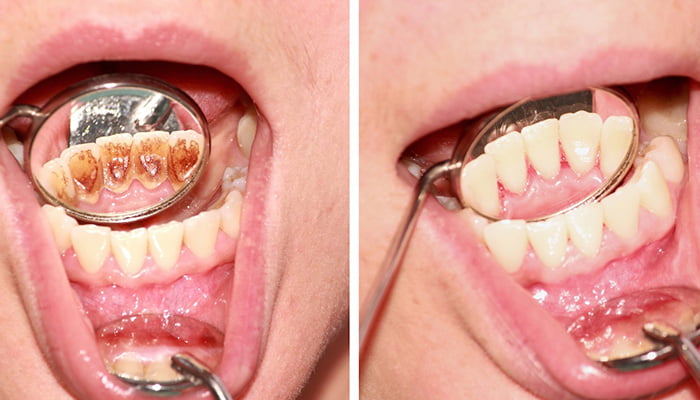Dental health is a vital aspect of overall well-being. Regular dental check-ups and cleanings are crucial for maintaining good oral hygiene. One of the procedures that often surfaces during dental discussions is deep cleaning for teeth. This article delves into the intricacies of deep cleaning, how it differs from regular dental cleanings, explores the disadvantages of deep cleaning teeth, and also takes a colorful look at different options for braces.
Deep Cleaning for Teeth: What is it?
Deep cleaning for teeth, also known as scaling and root planing, is a dental procedure that goes beyond the routine cleaning you receive during regular dental check-ups. It is typically recommended when a patient has signs of gum disease, such as periodontitis or advanced gingivitis.
During deep cleaning, the dentist or dental hygienist removes plaque and tartar not just from the visible parts of the teeth but also from below the gumline. This process involves scaling, which involves scraping off plaque and tartar, and root planing, which smoothens the tooth roots to prevent further buildup. The goal is to reduce inflammation, eliminate infection, and promote gum tissue healing.
Differences from Regular Dental Cleanings
- Extent of Cleaning: The primary difference between deep cleaning and regular dental cleanings lies in the depth of cleaning. Regular cleanings typically focus on the visible surfaces of the teeth, while deep cleaning goes deeper, addressing issues beneath the gumline.
- Purpose: Deep cleaning is recommended for patients with gum diseases or those who haven’t had regular cleanings in a long time, while regular dental cleanings are part of routine preventive care to maintain oral health.
- Procedure: Deep cleaning may require local anesthesia, as it can be uncomfortable due to the deeper cleaning process. In contrast, regular cleanings are generally painless and quicker.
Disadvantages of Deep Cleaning
While deep cleaning is an effective treatment for gum diseases, it does come with certain disadvantages:
- Discomfort: Deep cleaning can be uncomfortable and, in some cases, painful, especially when local anesthesia is used. Some people experience soreness and sensitivity afterward.
- Cost: Deep cleaning is more expensive than regular dental cleanings due to the extended procedure and the potential need for anesthesia.
- Multiple Appointments: Depending on the severity of the gum disease, deep cleaning may require multiple appointments, whereas regular cleanings are typically completed in a single visit.
- Post-Care: After deep cleaning, patients may need to follow a strict oral care regimen, including special toothbrushes or mouthwashes, which can be a bit inconvenient.
Different Color Braces
Shifting our focus from cleanings to orthodontic treatments, let’s explore the different color braces. Braces are not just about straightening teeth; they can be an opportunity for self-expression with a variety of color options.
- Traditional Metal Braces: These are the most common type of braces, and patients can choose from a range of colored bands to attach to the brackets. This can be a fun way for children and teenagers to express their personalities or celebrate events.
- Ceramic Braces: Similar to traditional braces but less noticeable due to clear or tooth-colored brackets, ceramic braces still offer color options for the bands.
- Invisalign: While not braces in the traditional sense, Invisalign aligners can be customized with colored dots, allowing patients to add a touch of color to their orthodontic treatment.
- Lingual Braces: These are placed on the back of the teeth, making them less visible, but some lingual braces offer the option of colored bands if desired.
Choosing different colored braces can be an exciting aspect of orthodontic treatment, making the process more enjoyable and less daunting, especially for younger patients.
Conclusion:
In summary, deep cleaning for teeth is a crucial procedure for individuals with gum diseases, offering effective treatment but accompanied by certain disadvantages. It differs from regular dental cleanings in terms of depth, purpose, procedure, and cost.
On a brighter note, braces come in a variety of colors, allowing patients to embrace their individuality and make their orthodontic journey more colorful. Whether you’re facing deep cleaning or considering braces, remember that both are essential for maintaining oral health and achieving a beautiful smile.




